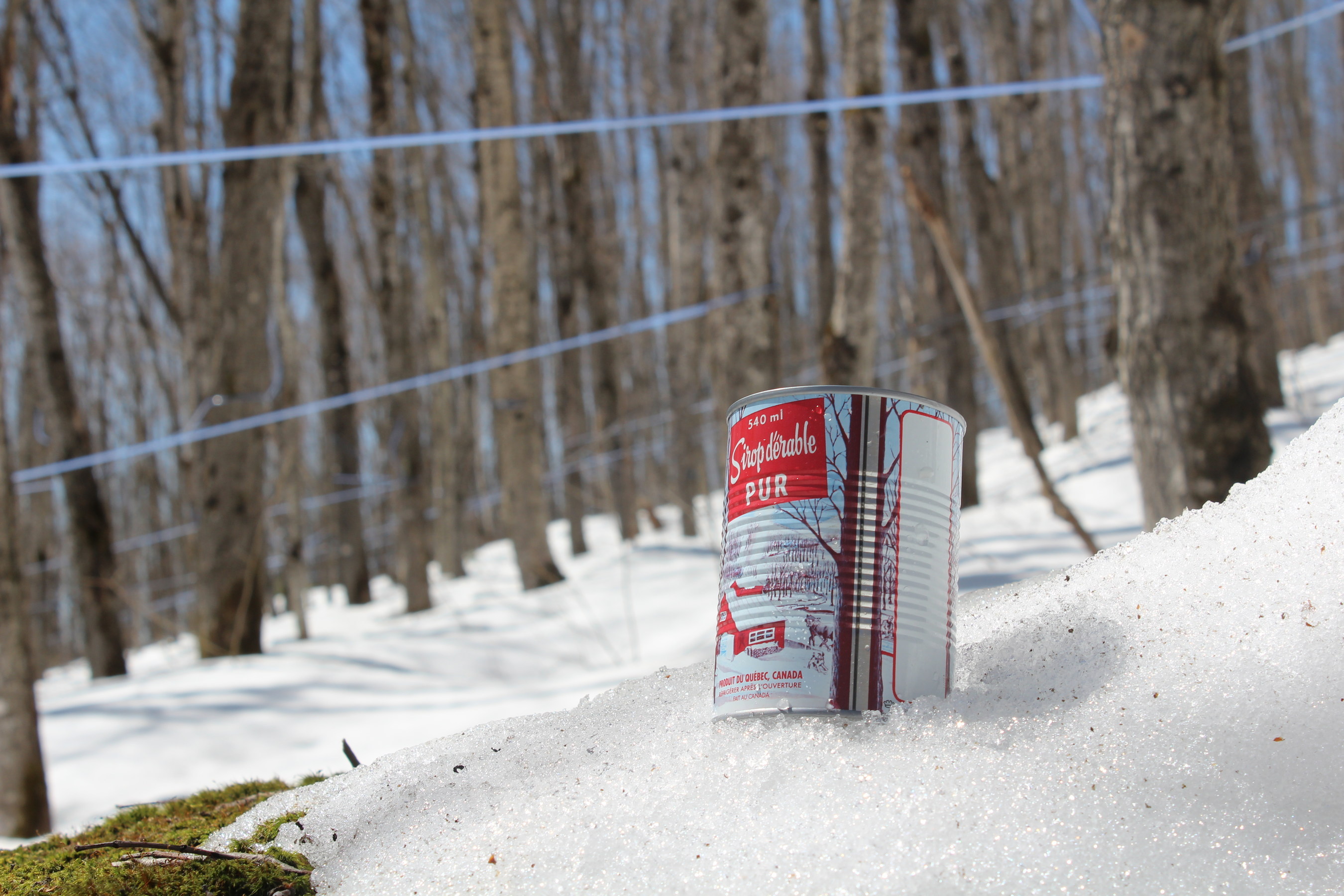
Fanshawe College conducts research for maple syrup industry
Food in Canada
Food In Canada maple syrup
Buddy is no friend to Ontario maple syrup producers. In fact, the unpleasant flavour — characterized by its burnt Tootsie Roll taste and smell — is an uninvited annual guest that generally occurs toward the end of the sap harvest season and when left undetected, results in unsaleable maple syrup and significant economic loss for its small business producers. Yet, until now, it has been a mystery to producers as to why the off-flavour shows up in their crops.
“We know buddy comes when the buds start to swell, but it’s guesswork really,” said maple syrup producer Bob Gray, a retired ecologist who runs Kemble Mountain Maple Products, a small sugar shack north of Owen Sound in Ontario. “Sometimes we pull the plug on the season too soon and other times the odour simply doesn’t show up until we boil.”
Fanshawe College Mitacs internship program is conducting research on this problem. Ontario’s more than 3,000 maple syrup producers may one day soon be able to use a simple universal field test that works like a pregnancy test, indicating the presence of buddy by looking for a specific chemical compound, just as a pregnancy test indicates the presence of elevated hormones.
Like many producers, Gray has traditionally relied on nature to signal the arrival of buddy: three consecutive nights of peeping frogs means it’s time to stop collecting sap. If he guesses wrong, it could mean losing as much as $2,000 worth of syrup stock and that’s a heavy hit for a small producer with just 700 taps.
“If we could nail it more definitively, we’d be able to produce more high-quality syrup and avoid the economic impact of buddy altogether,” he said, noting that Ontario maple farms yield four million litres annually with an overall economic benefit of $70 million.
To ensure success in advance of next year’s harvest season, members of the Ontario Maple Syrup Producers Association (OMSPA) have begun tackling the buddy problem with science, partnering with researchers at Agriculture Canada and Fanshawe College with the support of Mitacs. The group of producers contributed to the $7,500 cost to secure a research intern, and that amount was matched by Mitacs.
Groundbreaking research
Since May, Mitacs researcher Eloy Jose Torres Garcia, a Colombian microbiologist and biotechnology undergraduate student at Fanshawe, has been working with the research team to pinpoint the buddy phenomenon and identify a biomarker to serve as the basis for developing an early warning field test. After analyzing hundreds of samples sent in by OMSPA producers, his groundbreaking research is showing the actual chemistry that occurs in the sugar maple trees themselves.
“We’ve established that the buddy off-flavour is the product of a nitrogen compound found in the tree and now we’re working to identify exactly which one,” said Garcia, who is now working to develop an easy-to-use field test to detect buddy that could work in a similar fashion to a pregnancy test. “If we can’t produce the pure buddy molecule, we can at least isolate the one that indicates the problem is coming.”
According to Mitacs Vice-President of Business Development Jesse Vincent-Herscovici, the Mitacs internship program — supported by federal and provincial government funding — is aimed at helping businesses succeed, with the majority of its partners small- to medium-sized enterprises.
The Mitacs internship program also benefits students, who overwhelmingly report improved academic experience and skills development, as well as increased employability beyond graduation, as a result of their internship experience. More than 80 per cent of Mitacs partner companies are small- and medium-sized business, and a recent study showed that more than 25 per cent of former interns progress to career employment in R&D roles.
For producers like Gray, the idea of using a simple test to definitively know that buddy has arrived is game-changing. “We certainly need help to solve this problem,” he said, adding that it’s extremely satisfying to see the work getting done in Canada. “Canada is already known for our maple syrup. Now we have an opportunity to be recognized for our homegrown expertise in solving a complex maple syrup challenge as well.”
Print this page